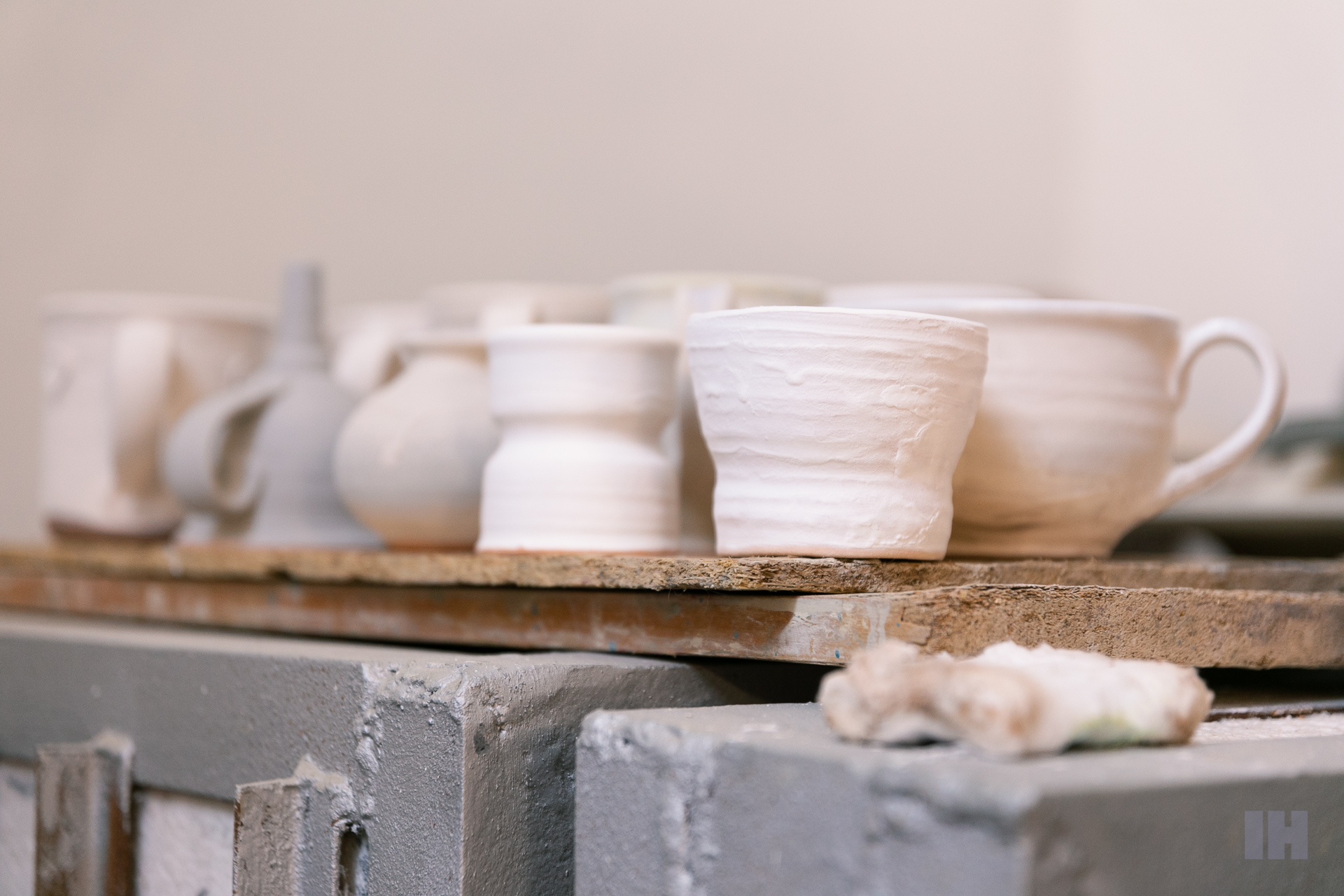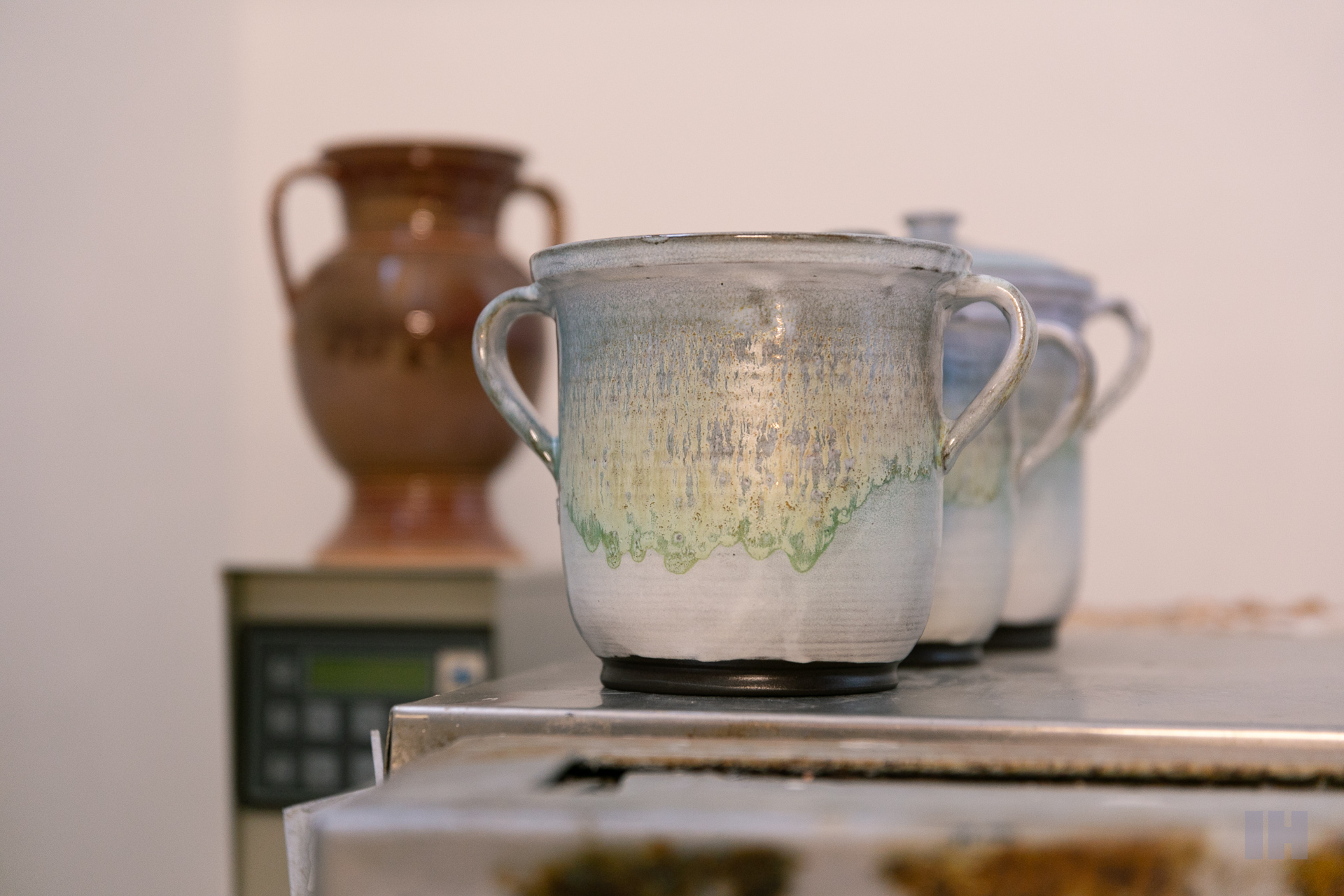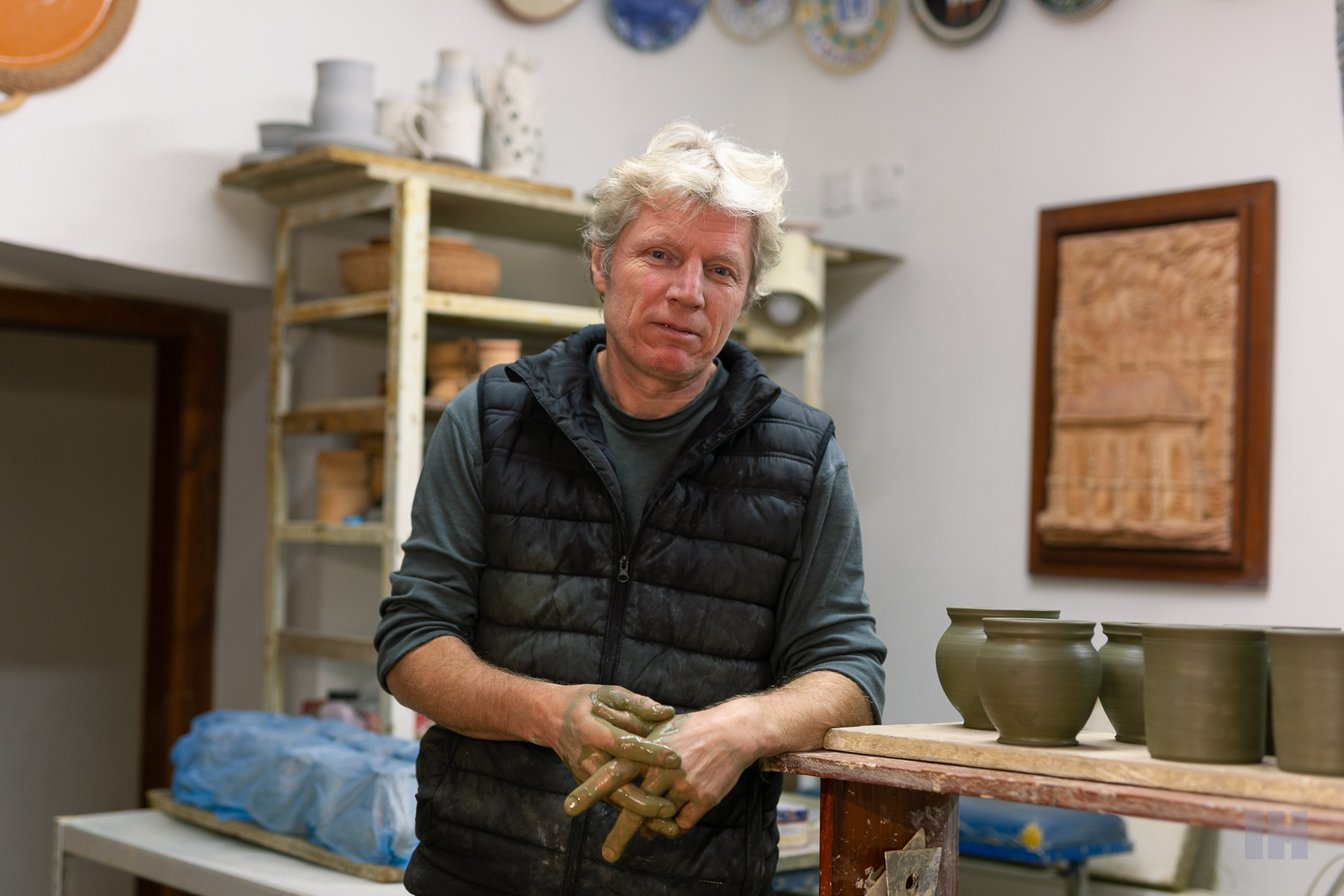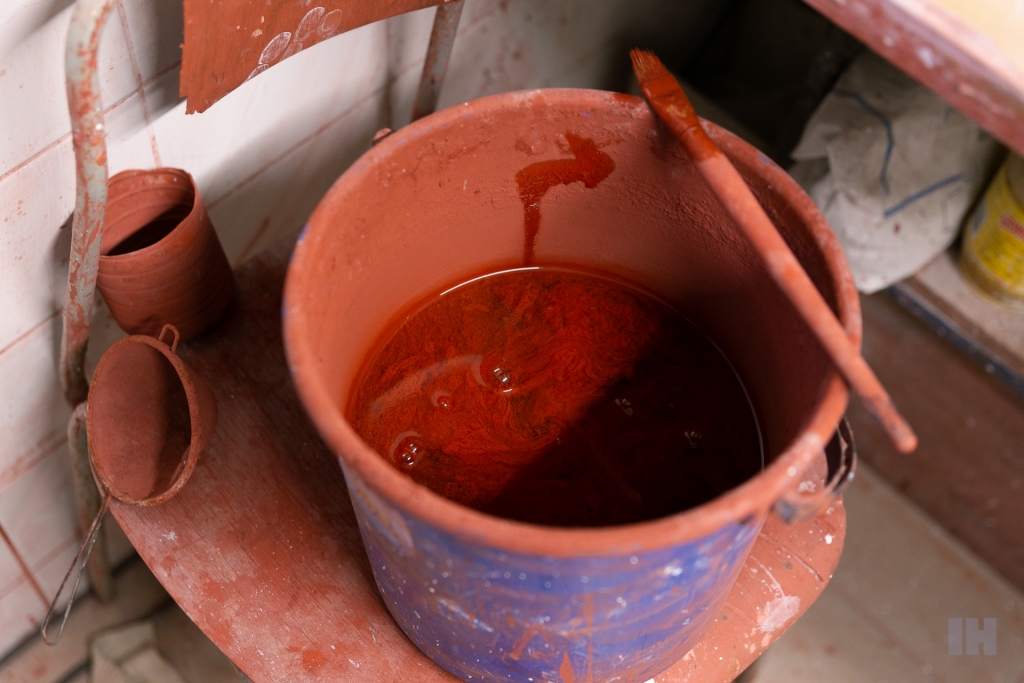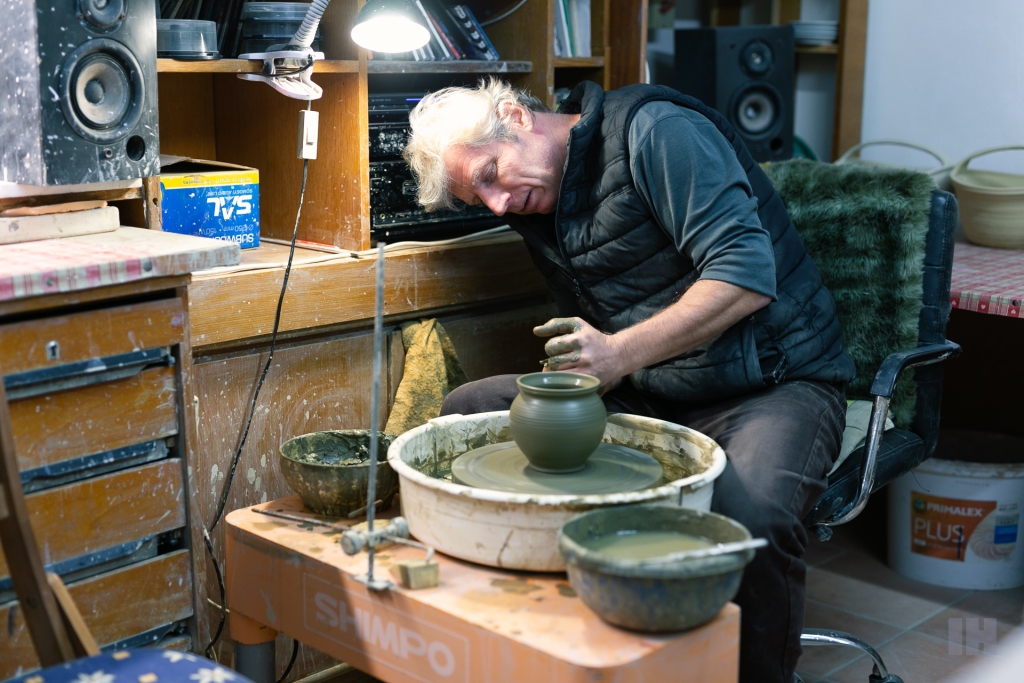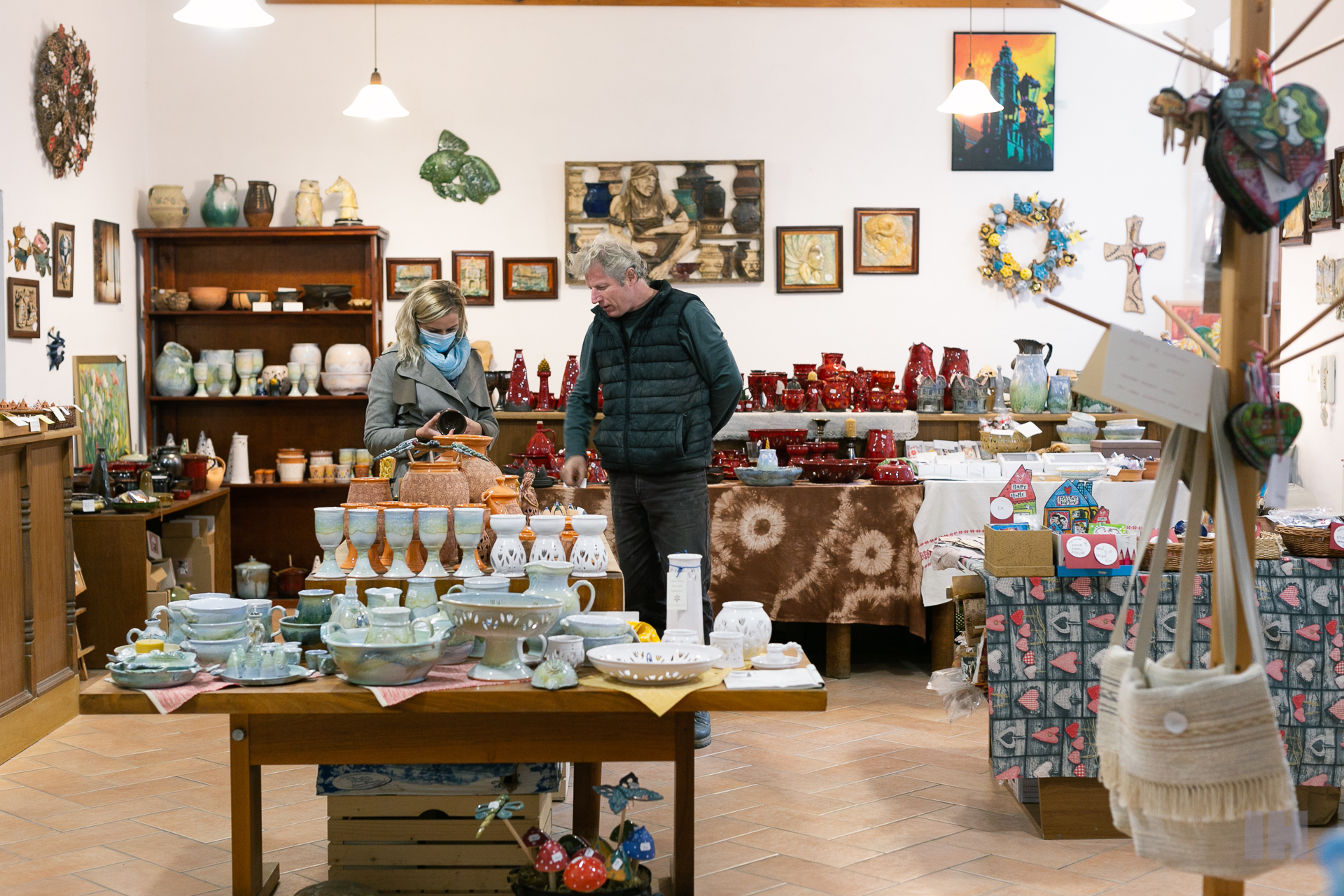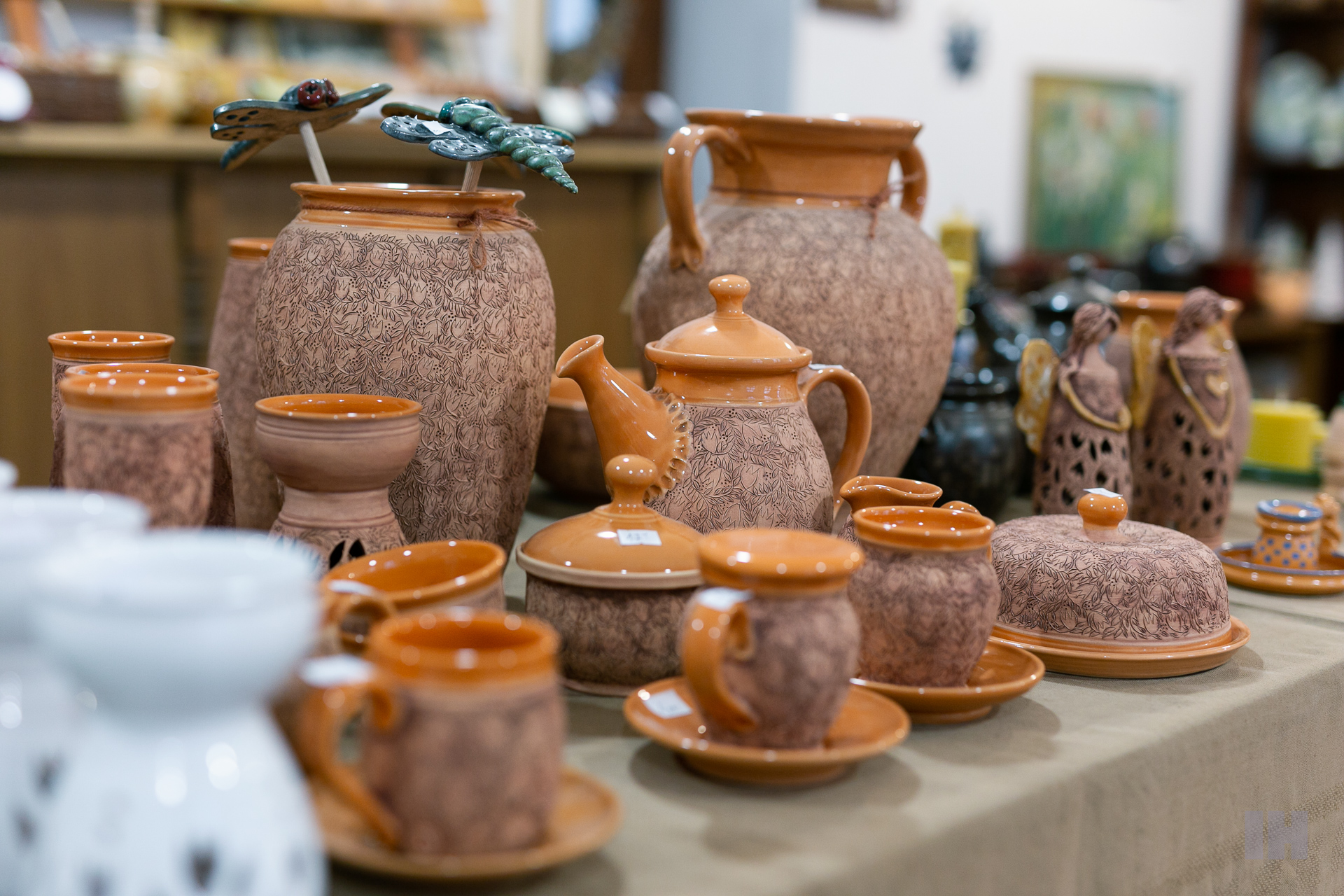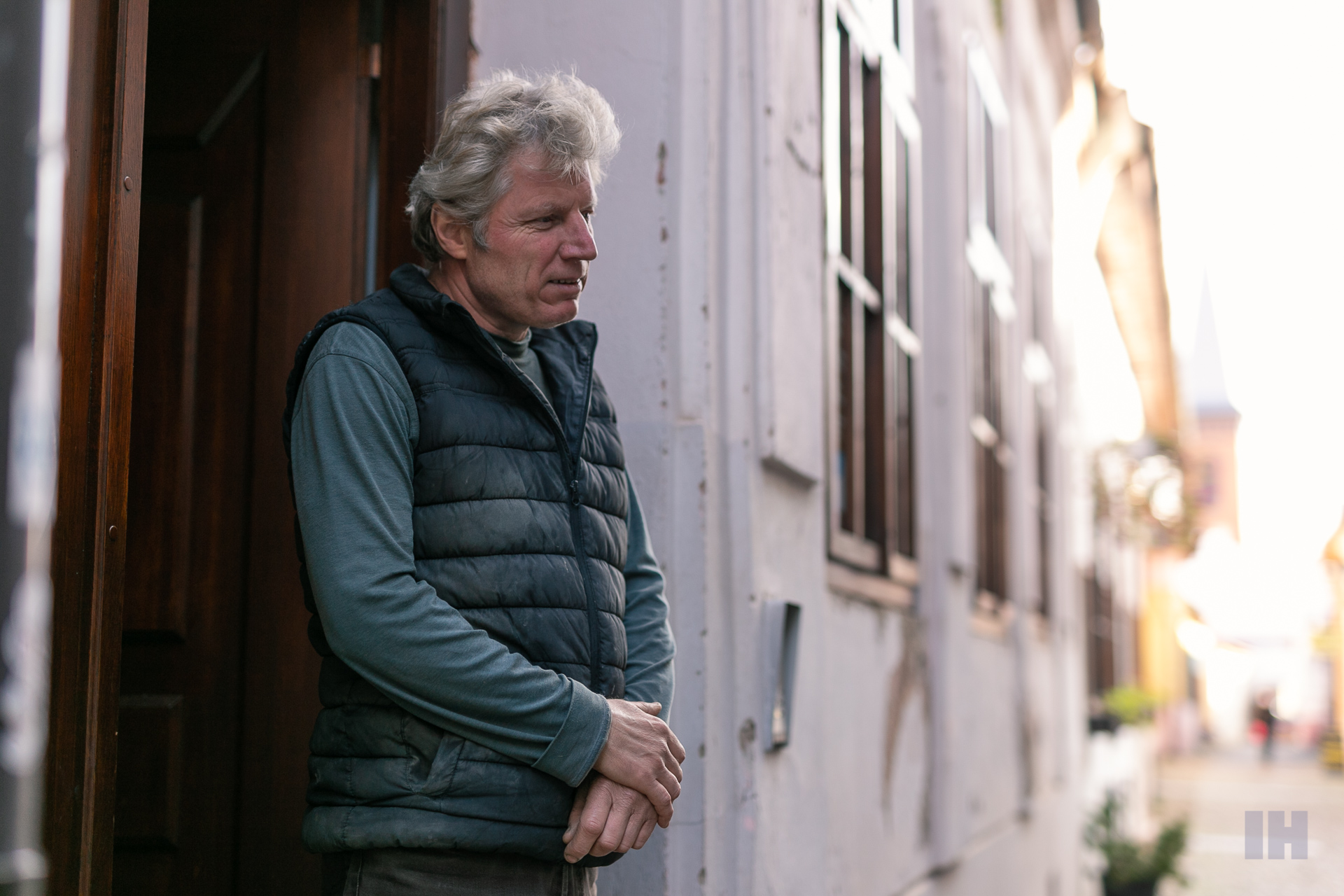Crafts need support from above in order to survive, says potter Igor Macák
He comes from Želiezovce, near Levice, but for more than 20 years he has been living here in Košice’s famous Alley of Crafts, Hrnčiarska St. Potter Igor Macák and his wife run a shop with ceramic decorative-utility items. In the following interview, he comments on his way to the craft itself, his views on the support of the field in Slovakia and the gradual displacement of craftsmen’s activities by mass production.
Slovak folk majolica from Modra
Igor recalls his path to the craft as a prosaic story. He had strong ties to modelling, drawing and artistic activities already in primary school. Later, he started to work with ceramics at the Slovak Folk Majolica in Modra, where also an important sculptor and ceramicist Imrich Vanek studied (his works can be found scattered in several cities in Slovakia, many in Košice). This study had a huge impact on practice in decorating and modelling clay.
“I started to work on pottery after the revolution in 1991 at my father’s-in-law in Barca, Košice area. During the era of mayor Rudolf Schuster, there emerged the idea to renovate the Alley of Crafts, Hrnčiarska St. Subsequently, several craftsmen settled here, such as a baker, blacksmith, herbalist, carpenter, goldsmith, shoemaker. My family and I are still here till this very day. To deliver our craft is challenging, technologically and energetically, but it is a wonderful job. However, the interest in pottery products, or craft products in general, has an overall declining trend. It’s hard to survive without support.”
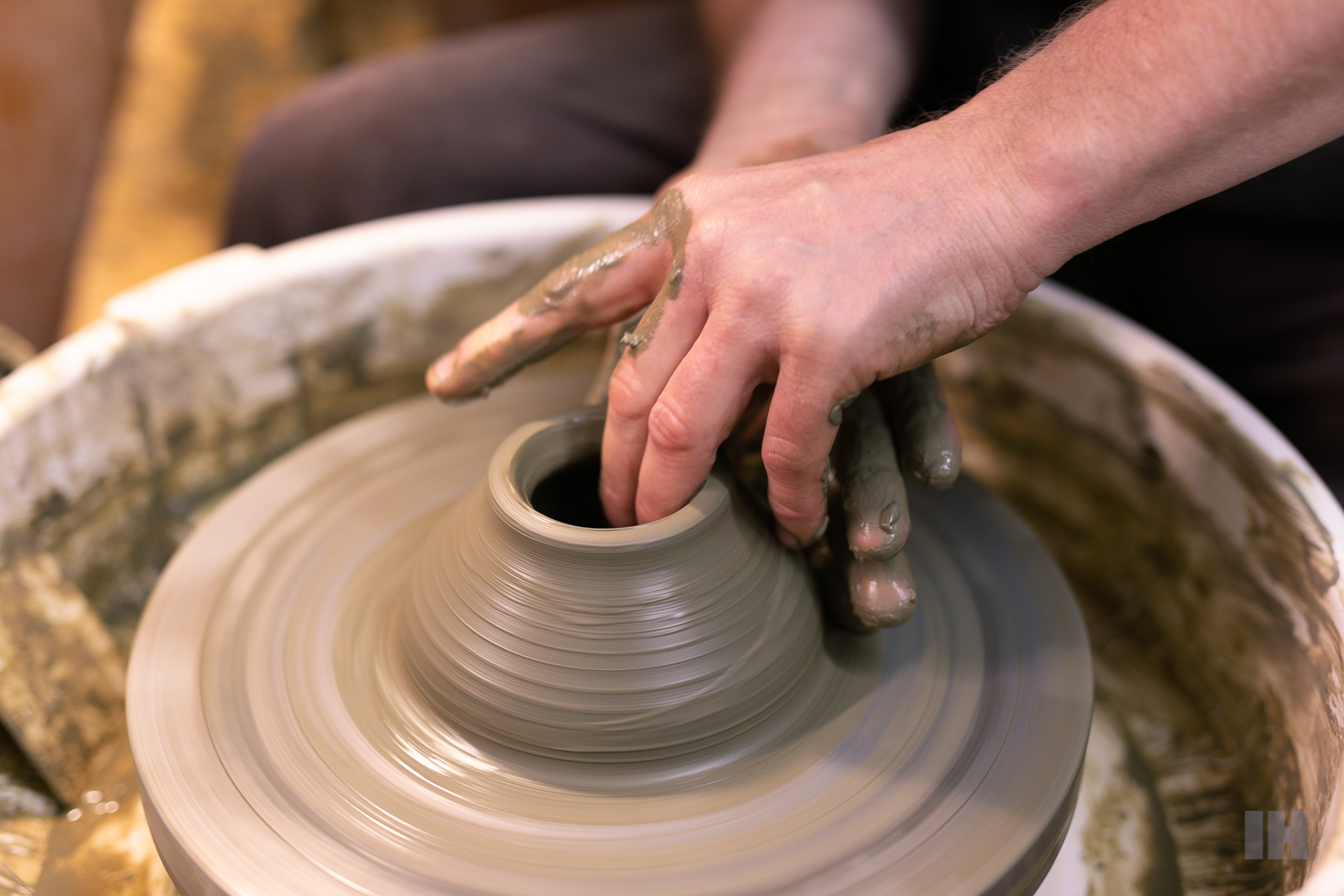
Crafts pay off. Or do they?
While Igor works on a potter’s wheel and burns clay in the kiln, his wife decorates, paints and carves ornaments into items for their shop on Hrnčiarská St. Decorative-utility items such as mugs, bowls, containers, jugs, vases and many others are sold here. Together they also work on private products for companies or clubs, prizes for competitions, plaques. For example, they also created historical replicas of carts, which were found as toys in the archaeological complex Nižná Myšľa.
“One needs to follow the market, yet to make orders according to his/her own design. We try to do everything so that it still contains our artistic expression. They are decorative-utility objects because they please both by looking and using them. We live a nice but demanding life. We are free in what we do, and the most important thing is that pottery brings us satisfaction.
However, we face an overpressure of competition, which is all around us – nowadays, even inexperienced people work on craft products. In the past, artists used to be supported by government orders, but today it is no longer taken care of. We need support not only for ourselves but for the craft as such. If we want to keep it alive, we have to take care of the people who work with it.”
“In creative work, one materializes one’s perception and ideas into a certain concrete form; such that no one else can imitate. Artistic and craft work brings enrichment for artists themselves and society. I feel satisfied with what I’m doing, even if it sometimes means struggling with the commercial world.”
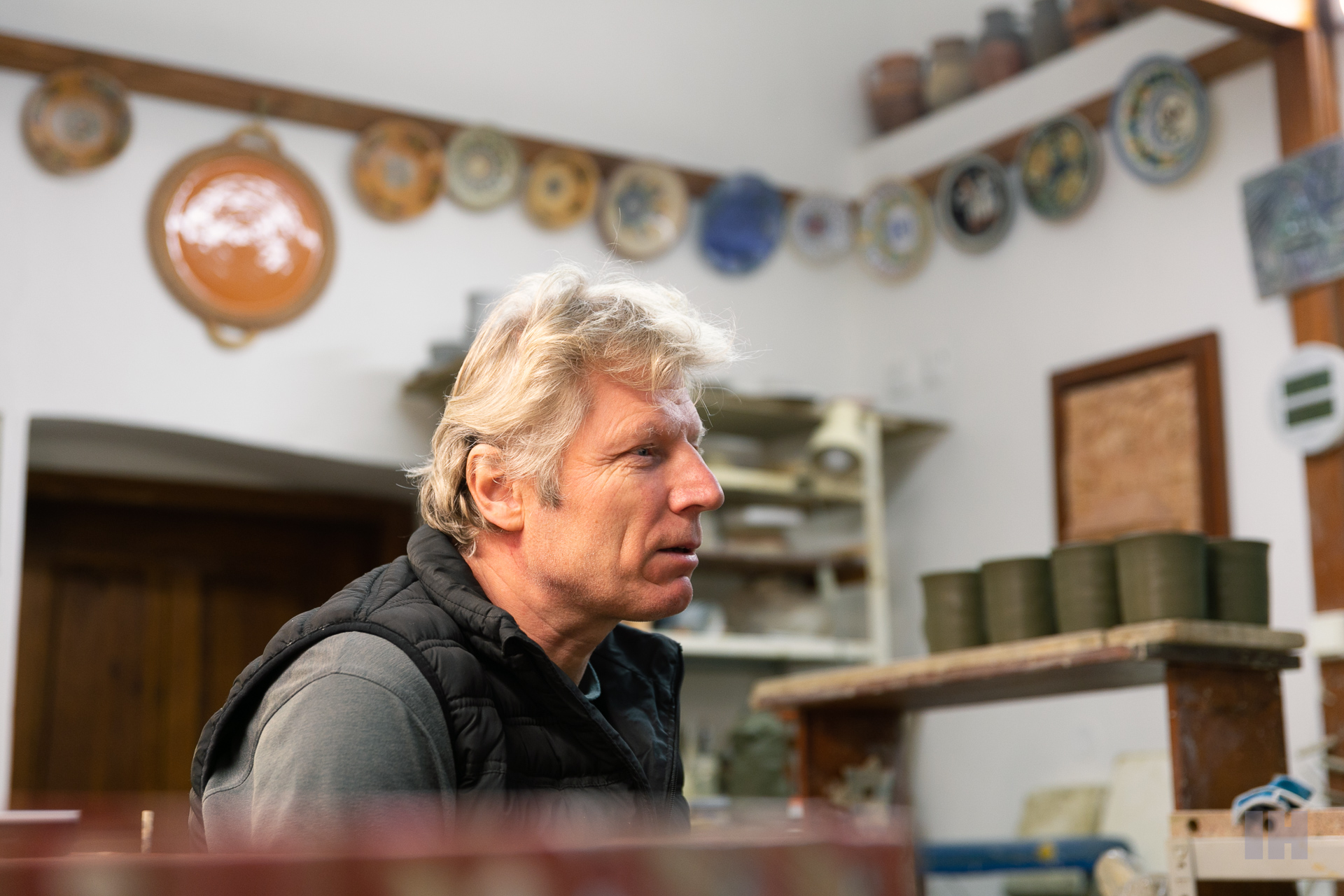
How does a potter work in the 21st century?
When he was young, Igor would dig clay directly from the ground, today he purchases it. There are different colours that burn in the oven/kiln at different temperatures. Fine clay is great for utility pottery, while coarser clay for modelling – coarser shards can withstand more vigorous shaping by other objects. The clay is usually fired in an oven at 900 ºC without glaze, with a glaze at 1050 ºC. Porcelain is fired even up to 1400 ºC.
From a geodetic point of view, Slovakia is rich in clay, loess, alluvium, which have settled for millions of years. A well-known site is, for example, a village near Michalovce, Pozdišovce. Flooded clay is used for the potter’s work, e.g. sieved through a sieve, which removes impurities and unwanted objects from it.
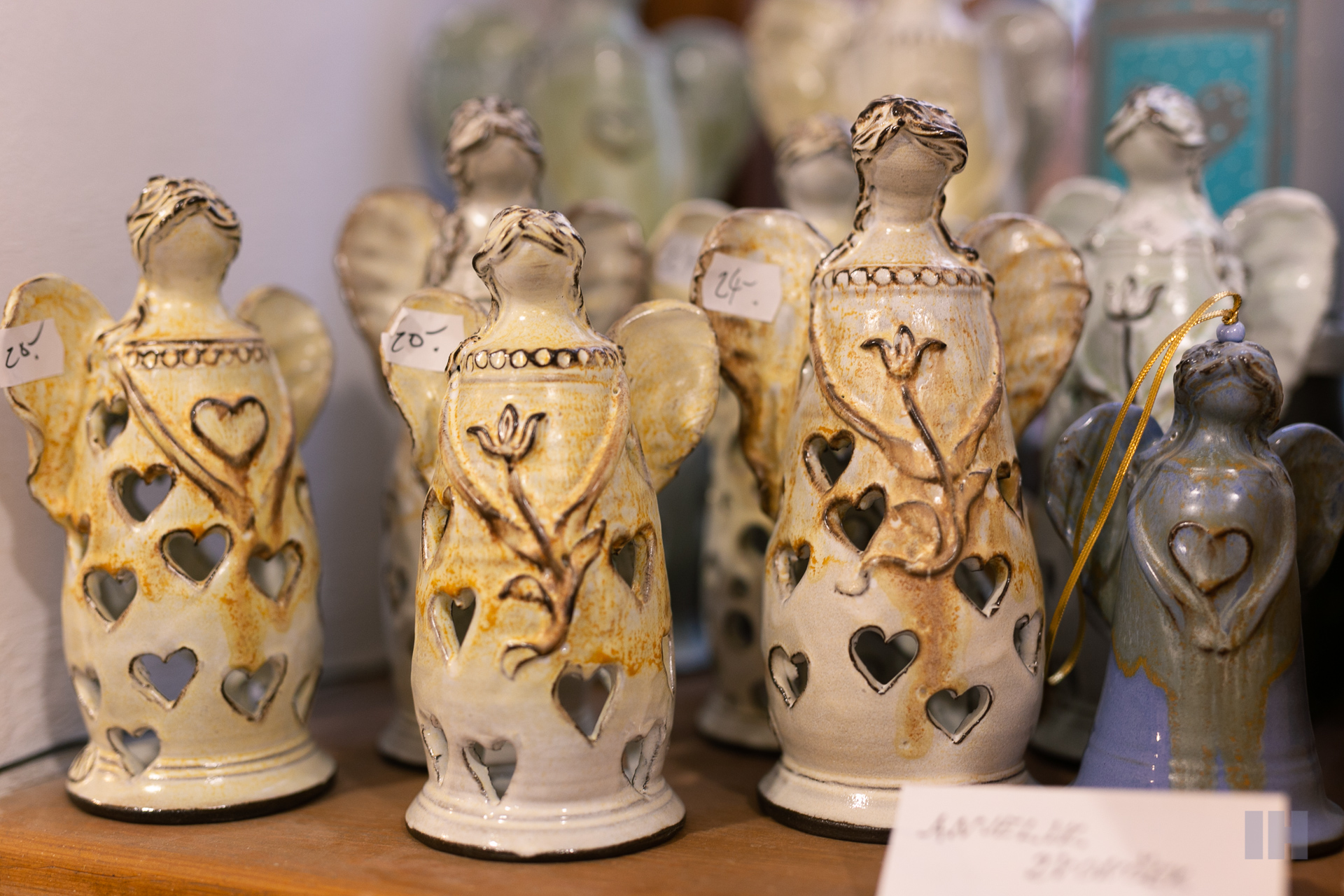
The enamel is sealed in a shard at 1050 ºC
Igor Macák works with an electric kiln, which is a practical, clean and relatively reliable device. Together with his wife, they work on the basis of different cycles – for a few weeks, they prepare goods/products that later dry and, after firing, cool in the oven slowly. Later, a glaze is applied to them, in other words, enamel which, when melted at a certain temperature, produces a coloured glossy colour. The glaze is powdered before firing and looks like slaked lime when mixed with water. It is then applied to the shard. It is fired at a temperature of 1050 ºC for 8 hours and slowly cooled for two days. The enamel gets sealed in the shard and after firing has a completely different shade than during the glazing phase.
“Our ancestors accidentally came to fire the clay by accident. It used to be fired without glaze for a long time, the raw shard would be polished until its pores closed. The glaze was used later. In practice, the craftsman should be able to assume the final shade, but only after firing will he/she find out how he/she actually managed to estimate it. Most glazes have a completely different colour before firing than after. Personally, I like to combine glazes, we mix them, using even five together on individual objects.”
Coffee from Macák’s cup tastes like love
The support of local people and tourists who want to own beautiful ceramic pieces created, painted and turned on a potter’s wheel by human hands can still help the slowly dying-out craft. The pottery of Macáks is located in the Alley of Crafts, Hrnčiarská St 19 in Košice. You can also meet them in person at the European Folk Craft Summer Festival in Kežmarok, where craftsmen from Slovakia and abroad meet. Enjoy your Christmas shopping with products by experienced local craftsmen who have dedicated their entire lives to their work. For example, one cup with several glazes.
